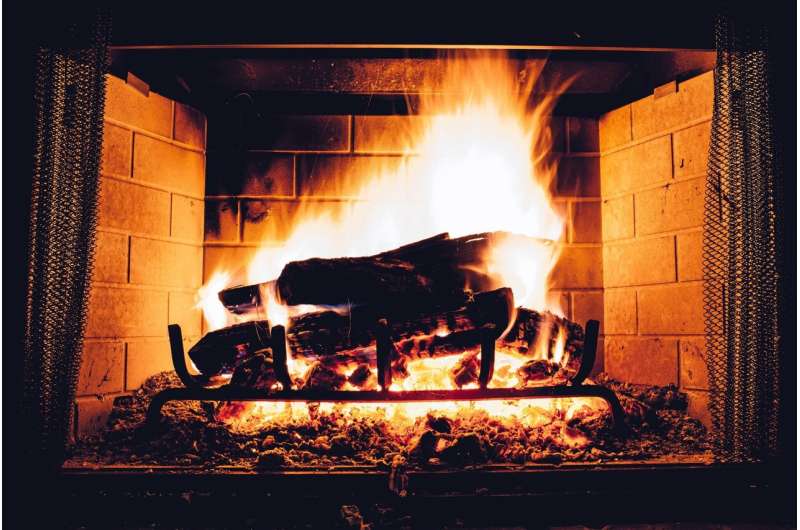Electric soot collector shows promise in mitigating emissions from residential biomass combustion

Air pollution emitted by residential biomass combustion is a known cause of adverse health effects, such as respiratory and cardiovascular diseases, as well as adverse climate effects. Residential biomass combustion has been highlighted as a major source of air pollution almost everywhere in the world, causing particularly high emissions of fine particulate matter, black carbon, and polycyclic aromatic hydrocarbons (PAHs).
Currently, manufacturers of stoves and fireplaces are facing new challenges, as they soon must comply with tightening emission regulations, such as the Ecodesign Directive entering into force in the European Union in 2022. Consequently, there is a demand for new emission control solutions for residential biomass combustion.
A new study from the University of Eastern Finland introduces a novel method to reduce particulate emissions: the high-temperature electric soot collector, HiTESC. In HiTESC, an electrically insulated high-voltage electrode is installed in a combustion chamber, which generates an electric field. Particles that acquire the electrical charges produced by flames are collected on the electrode surface and oxidized at high temperatures.
Using HiTESC, the researchers achieved a fine particle reduction efficiency of 45% in a logwood-fired masonry heater with a combustion procedure that resembles real-world usage. Particle emissions were measured with and without HiTESC on consecutive measurement days to determine the overall fine particle reduction efficiency of the device. Furthermore, batch- and combustion-phase-dependent particle reduction efficiencies were determined for the studied method with online measurement devices to investigate how the operating conditions affect the efficiency of the method.
The researchers found that the reduction efficiency of the method was found to be dependent on the combustion phase. The fine particle reduction was most efficient during the flaming conditions, when the fine particle emissions were the highest with the studied logwood appliance.
"The advantages of HiTESC are its simple construction, low space requirement, and low energy consumption. In addition, it doesn't require a separate cleaning mechanism. HiTESC can also be retrofitted in logwood-fired combustion appliances to achieve future emission regulation limits, without using costly exhaust after-treatment systems," says the article's first author, Early Stage Researcher Heikki Suhonen from the University of Eastern Finland. The developed technology is currently under commercialisation by the start-up company Noeton.
The study shows that utilizing the natural charges of flames can be used as a simple and feasible method to reduce fine particle emissions of logwood-fired appliances. According to the researchers, further studies to optimize the generated electric field are needed to achieve a potentially higher reduction efficiency for particulate matter. In addition, although HiTESC can retrofitted in existing wood burning devices, but it is likely that better results would be achieved when both the combustion device and electrostatic device are designed and optimized together.
More information: H. Suhonen et al, Novel fine particle reduction method for wood stoves based on high-temperature electric collection of naturally charged soot particles, Journal of Cleaner Production (2021). DOI: 10.1016/j.jclepro.2021.127831
















